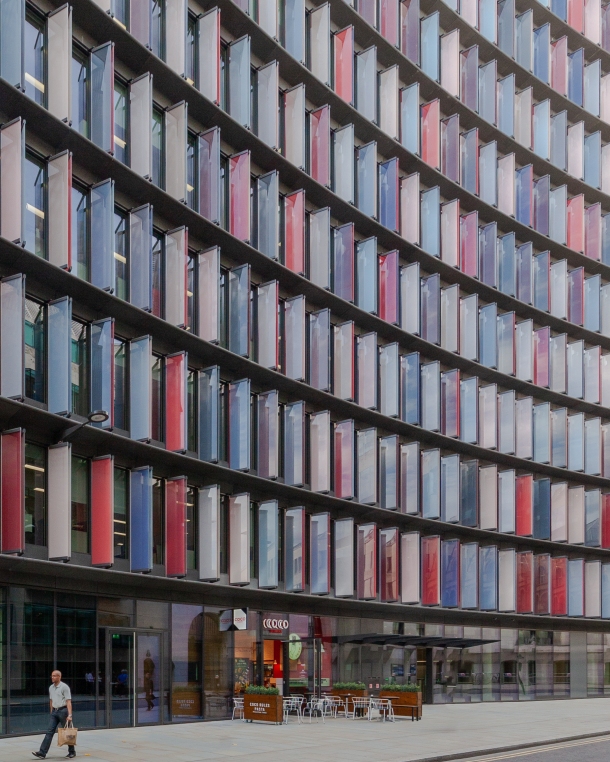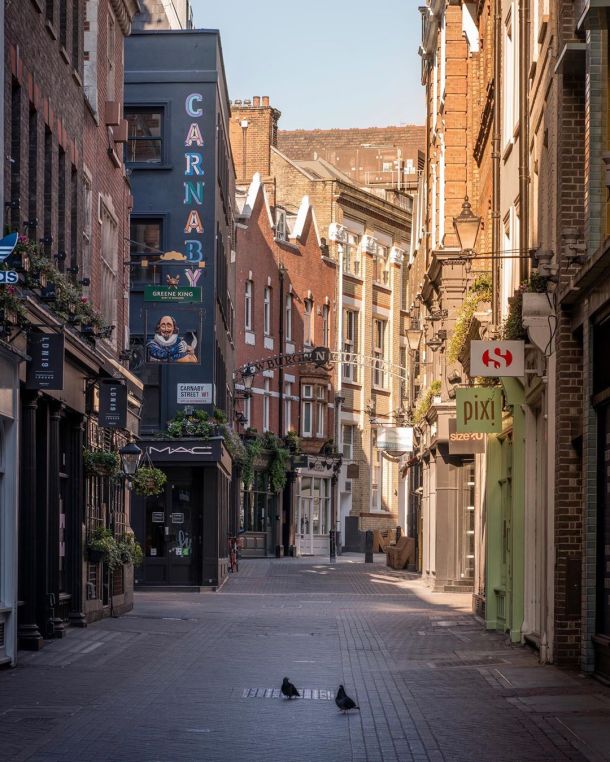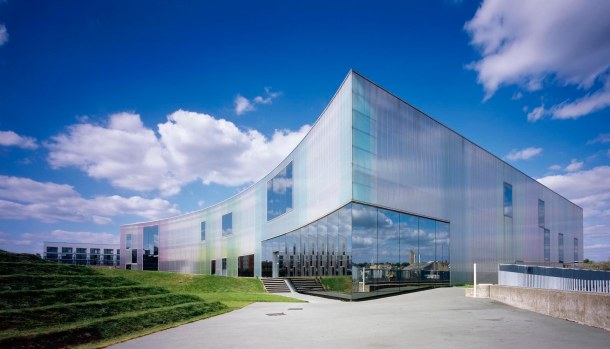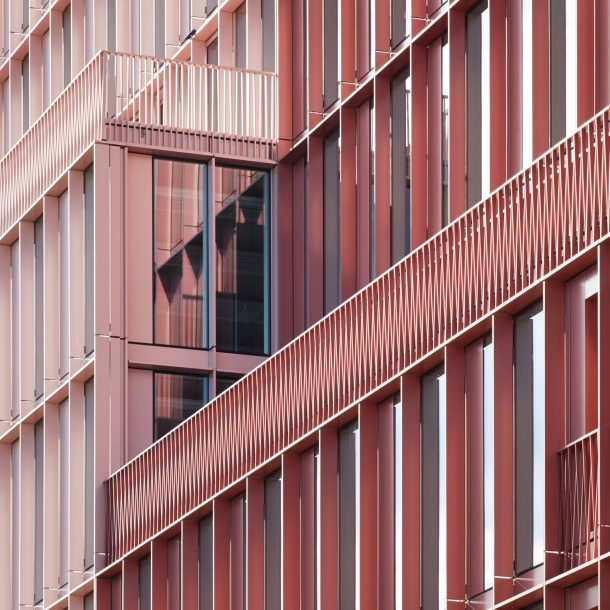We’ve been isolated for over two months now.
The lockdown in response to the current Coronavirus crisis in the UK – and in many other areas around the world – is taking its toll on us all, albeit in very different ways. While some are working more than ever, others are struggling to be out of business. And some of us are in between those two worlds.
I’ve been very busy working on my next book, New York, and at the same time struggling because I haven’t been able to visit any of these places in person. For me, researching The Big Apple has helped – as mentally I’ve been stimulated by this city’s architecture. However, I deeply connect with buildings through on-site sketching. And that hasn’t been possible, or won’t be possible for the foreseeable future.
In these awkward weeks, I’ve found myself asking: What brings me the most joy of the parts of my work I can still do? Given that I can’t complete any part of New York at this point, I’m trying to find the positive and stimulating parts of my work. The answer is learning about new and beautiful places that I might visit in the future. As London seems more approachable to me than New York right now, I’ve compiled this colourful list to help me dream a little towards what’s possible at the moment.
How are you dealing with uncertainty? Are you also dreaming of the places and people you’ll see when all this is over?
Check 12 Sites To Take The Best Skyline Pictures in London
1. Central St Giles
2010 proved to be a great year for Renzo Piano, as two major buildings reached completion in London: The Shard and Central St Giles. This scheme is composed of complex volumes, which are characteristically chiselled fragmented and reduced in scale to match the surrounding buildings. These chiselled volumes shape an impressive scuptural façade characterized by a combination of shimmering facets. Read more here.
Location: 1 St Giles High St, West End, London WC2H 8AG (Google Maps)
Architect: Renzo Piano
Year: 2010
2. The Circle
Separated from the River Thames by the warehouse-lined canyons of Shad Thames, this ‘inland’ site comprises two mainly residential buildings either side of Queen Elizabeth Street. The street elevations respond to their London stock brick warehouse neighbours, but here the metal windows are finished in light gold, the parapets undulate and balconies are bracketed on pine logs. The central forecourt elevations are in deep blue glazed bricks, the space reading as a circular seam of cobalt in the canyons of London stock brick. Read more here.
Location: Queen Elizabeth St, SE1 2JU (Google Maps)
Architect: CZWG Architects
Year: 1989
3. Two New Ludgate
Located opposite the Old Bailey Central Criminal Court and close to St Paul’s Cathedral, it offers nine floors of office space together with a restaurant and retail areas. Its façades are characterised by an array of movable glass louvres whose polychromatic compositions respond to the various surrounding urban spaces. A gentle concave curve in the east adds generosity to the otherwise narrow street and the neutral and warm colours harmonise with the Portland stone of the older neighbours. Read more here.
Location: Queen Elizabeth St, SE1 2JU (Google Maps)
Architect: Sauerbruch Hutton Architects
Year: 2015
4. Carnaby Street
World-famous in the 1960s, Carnaby Street is a pedestrianised shopping street running parallel with the middle part of Regent Street. Carnaby Street was laid out in the 1680s and the first property known to have stood here was Karnaby House, built by bricklayer Richard Tyler. By the mid-19th century most of the street was given over to trades of various kinds. In the 1950s some of these tailors began to produce more distinctive garments for direct sale, including suits for the smartly dressed Mods of the early 1960s. At the height of ‘swinging London’ only Chelsea’s King’s Road offered serious competition. Read more here.
Location: Carnaby St, W1F (Google Maps)
Year: 1680’s
5. Laban Building
The large, embracing gesture of the Laban building volume gives the effect of creating a spatial limitation as well as a melting together of Laban Garden and Laban Centre. The topographically shaped structure of the garden – simultaneously serving as an entrance yard for the Laban Centre and a place for walking, playing or leisure – finds corresponding qualities in the interior gestalt of the building. Colours determine the rhythm and orientation both inside and outside the building. The exterior façades consist of transparent or translucent glass panels, depending on whether the space behind them requires a view. Coloured, transparent polycarbonate panels are mounted in front of the glass panels and serve as a protective shield (against sun, glare, and heat radiation) and contribute to the overall energy system. Read more here.
Location: Creekside, SE8 3FB (Google Maps)
Architect: Herzog & de Meuron
Year: 2003
6. R7
R7 is an 11-storey-high building in the fast-developing area of King’s Cross. Its gridded facade is finished in two shades of pink, one of which is a close match to 2017’s hottest hue, millennial pink. However Duggan Morris Architects director Joe Morris said this came about by chance. The aim was to use colour to differentiate between the two halves of the building, but to make them also feel like part of the same family, separate from other new buildings in the area. The two shades of pink chosen echo the rosy hue of the bricks of the nearby St Pancras Hotel, an ornate 19th-century building that sits at the southern edge of the regeneration scheme area. Read more here.
Location: 14-18 Handyside St, Kings Cross, London N1C 4DN (Google Maps)
Architect: Duggan Morris Architects
Year: 2017
7. Bywater Street Houses
This very cheerful street located near the famous Saatchi Gallery has enough colour, charm, and cuteness to satisfy you. The best time to visit? Early on a Monday, when no cars will disturb your perfect capture.
Location: Bywater St, Chelsea, London SW3 4XD (Google Maps)
8. New Kent Road
The £2.1 million ($3.2 million) affordable housing scheme in Elephant and Castle was designed to resemble a creeping vine, in the form of triangular cladding on the front and rear elevations. These apartments located on New Kent Road are finished with a mix of green tones, creating a tropical green escape in the midst of a concrete jungle. The façade is made of high-pressure laminated panels in a range of trilateral shapes and vibrant colours, including Turf Green, Brilliant Green and Moss Green. Read more here.
Location: 134 New Kent Rd, London SE1 6TU (Google Maps)
Architect: Glas Architects
Year: 2012
9. Neal’s Yard
Hidden inside this colourful courtyard you’ll find a micro-village full of independent restaurants, bars, cafés and shops. Inside this little enclave, you can get everything from pizza to pedicures… and every business is committed to sustainable and ethical commercial practices. Not too long ago, Neal’s Yard was used as a waste area filled with bins. Luckily, before it was demolished, a bloke called Nicholas Saunders used his entrepreneurial skills to save the space and create the buzzing, colourful corner that it is today. Read more here.
Location: 15 Neal’s Yard, WC2H 9DP (Google Maps)
Architect: Glas Architects
Year: 1980
10. Notting Hill Houses
Despite the modernisation of the city, when one thinks of London’s local and most authentic architecture, typical Victorian houses come to mind. Nestled on a quiet tree-lined street, these colorful houses are little rebels compared to its neighbours. Read more here.
Location: 46B Lancaster Rd, W11 1QR (Google Maps)
Architect: Thomas Allason
Year: 1870
11. Container City 2
 © Modulate
© Modulate
Touted as the world’s most famous container building, Container City II is a bright, bold vision, jutting out from the otherwise grey waters of the River Thames at Trinity Buoy Wharf. With its uneven ziggurat shape and vivid colours, the unmistakeable structure is designed to reflect the creative nature of the artisans who occupy its 22 studios. The Trinity Buoy Wharf project was devised as an innovative way of building affordable new workspace. Container City is a trademarked, fully flexible modular system of using repurposed shipping containers to create stylish and high quality, yet affordable, accommodation for various uses. Read more here.
Location: 64 Orchard Pl, Poplar, London E14 0JW (Google Maps)
Architect: Nicholas Lacey & Partners
Year: 2002
12. Blue House Yard
Blue House Yard is a temporary redevelopment of a former car park including creative work and retail space, a public square for markets and events and a double-decker bus transformed into a café with seating internally and in the yard. High Street Works in partnership with London Borough of Haringey have transformed the site into a place for local creatives, entrepreneurs and residents for the meanwhile use period of 5 years. The redevelopment created both private spaces for rent and a new public space for meeting friends, discovering events and interacting with local designer-makers. Read more here.
Location: 5 River Park Rd, Wood Green, London N22 7TB (Google Maps)
Architect: Jan Kattein Architects
Year: 2017
Check these and other amazing places in London on Architectour Guide
 ©
©  ©
©  ©
©  ©
©  ©
©  ©
©  ©
©  ©
©  ©
©  ©
©  ©
© 
Pingback: 12 Amazingly Colorful Buildings | Virginia Duran
Pingback: 13 Unusual and Secret(ish) Things to Do in London | Virginia Duran
Thanks for these colourful pictures! You show us buildings off the guidebooks.
How do you assess the situation in London at the moment? Are more people taking to the streets again or are you still very isolated?
LikeLiked by 1 person
Thanks Susanne, these are some of the buildings I personally look forward to visiting. London is still the city with most cases but as the weather has been amazing, people have been on the streets. How about you? How is your situation?
LikeLike
Here in Berlin people are also drawn to the streets when the weather is good. Today it is very cloudy in Berlin and an unusual calm lies over the city.
LikeLiked by 1 person
I suppose it will be slow and progressive everywhere as now with globalisation we are all connected to each other. Stay safe Susanne, greetings from the UK.
LikeLike
Thank you, Virginia, we had to cancel our visit in scotland. Too Bad!
LikeLiked by 1 person
Oh no!! I hope you can visit Scotland in the (near?) future some day 🙂
LikeLike
We hope so. The future will show 🙂
LikeLiked by 1 person
Esperaremos a esos prometidos bocetos de la gran manzana. Un saludo. Pedro
LikeLiked by 1 person
Muchas gracias Pedro. He empezado algunos de los que tengo aún el recuerdo muy vivo pero muchos otros tendrán que esperar. Lo que he pensado es cambiar de escenario y dibujar lo que tengo a mi alrededor… donde vivo, mi calle, etc. Así me mantengo contenta. ¿Qué tal ha ido tu semana? ¿Algún viaje en pausa también?
LikeLiked by 1 person
Sí, Mallorca, París…, en fin.
LikeLiked by 1 person
Vaya… mucho ánimo. Esperemos que pronto el turismo nacional vuelva a la normalidad.
LikeLiked by 1 person
A. Oh please of days ago the hubby and I were talking about places we’ve been and would like to go again. His choice was London. After seeing these photos I’m right there with him. Hopefully, we will feel it’s safe to travel sometime in the not too distant future.
LikeLiked by 1 person
I am so glad this has stirred up your love for London 🙂 Had you been here long ago? I am also longing to get back to our normal lives.
LikeLike